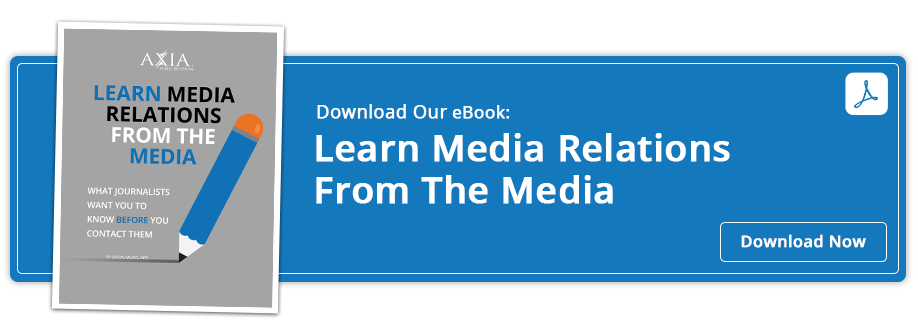COVID-19 has radically changed the habits of most journalists
 With 94% of journalists stating that some, most, or all of their reporting has taken a COVID-19-related pivot, their work, habits and preferences have adjusted to the circumstances created by the pandemic.
With 94% of journalists stating that some, most, or all of their reporting has taken a COVID-19-related pivot, their work, habits and preferences have adjusted to the circumstances created by the pandemic.
Let’s examine Muck Rack’s recent study on the current state of journalism:
Social media, news consumption, and reporting
Effects of the pandemic
According to 43% of respondents, their reporting has significantly pivoted to cover COVID-19-related matters. While only 6% of journalists claimed their work has not changed at all, 51% reported that some of their reporting has shifted in response to the pandemic.
The economic uncertainty related to the pandemic affected respondents differently. Only 14% of respondents could boldly say that the situation did not affect their work at all. The remaining 86% of journalists were affected in multiple ways.
From layoffs and furloughs leading to less work for some and more work for others, the vast majority of journalists’ work was affected. Some journalists completely focused their reporting on pandemic-related topics, such as health and remote work.
Similarly to 2020, 58% of journalists are optimistic about journalism as a profession in 2021. Industry optimism has steadily climbed since 2018.
News sources
58% of respondents turned to online newspapers and magazines as their primary news sources. Print newspapers and magazines seem to be falling out of favor, as only 7% of respondents considered them first, much like TV and cable news. Twitter was also preferred, with 16% of respondents listing the social media platform as their primary news source.
When assessing sources and their credibility, 86% of respondents viewed academic experts as dependable sources. CEOs and PR professionals are viewed by journalists as acceptable sources, scoring 74% and 55%, respectively. Only a tenth of respondents viewed celebrity spokespeople and self-approved experts as authoritative sources.
Social media
Journalists value social media platforms differently. While 76% of journalists are huge fans of Twitter—a significant drop from 85% last year— 38% think Facebook is the way to go. LinkedIn and Instagram gathered the votes of only 23% and 15% of respondents, respectively. YouTube, Reddit, and Tik Tok are considered valuable by only 12%, 7%, and 2% of respondents, respectively.
Out of all social media platforms, most respondents spend more time on Twitter and less time on Facebook.
58% of respondents frequently consulted a company’s social media account during their reporting on the company. 28% of respondents occasionally checked company social media, while 14% never or rarely do so.
Approximately six out of every ten respondents said that tracking the number of times their stories are shared on social media matters. In order for a story to do well on social media platforms, 70% of respondents said the subject has to be connected to a trending story, while 64% would also like to see an image or infographic.
A slight majority of respondents said that stories must be relevant to target audiences to be shareable. Around 24% of journalists look for multimedia content when sharing reporting on social media, while brevity only appealed to 20% of the respondents.
Media relations and pitching preferences
The respondents listed different views on the strategies that companies employ when pitching media outlets. Approximately 61% of respondents thought that the approaches were outdated.
Only 6% of respondents viewed media outlets’ relationship with PR professionals as a partnership. While 59% view the relationship as mutually beneficial and not a partnership, the remaining 35% do not have a positive view of the relationship.
Pitches
Compared to a year ago, the likelihood of responding to pitches hasn’t changed for the majority of journalists. The number of those who are likely to respond is equal to the number of those who will not.
About a fourth of respondents attributed their immediate rejection of pitches to bad timing, while another fifth found the lack of personalization distasteful. Lengthy pitches and confusing subject lines were cited as other reasons journalists reject pitches. However, only 3% of journalists said they disliked large attachments.
Almost all respondents said they would rather be pitched via direct email. 21% of respondents were fine with being pitched via social media, while another 14% prefer to be pitched via phone and mobile messaging apps, such as WhatsApp and SMS.
Nearly 80% of respondents listed Monday and Tuesday as their preferred days for receiving pitches. Surprisingly, 8% of the participants are fine with receiving pitches during weekends. In terms of timing, the majority respondents said pitches should be sent between 5 a.m. and midday.
Evening and overnight pitches only work for a small percentage of journalists.
On a typical business day, 43% of the respondents receive between one and five pitches. In a typical week, about a third of respondents published two to four stories, 19% published five to seven stories, and 9% published eight to 10 stories.
Only 1% of journalists said that all their stories originate from pitches. The majority of respondents said that either a quarter, half, or three-fourths of their weekly stories originate from pitches. Since respondents indicated that brief pitches appeal to them, pitches should never exceed 1,000 words.
Follow-up Emails
One or two follow-up emails are perfect, according to 82% of the respondents. Very few journalists are fine with three or more follow-up emails.
Half of respondents thought it was fine to follow three to seven days after the initial email was sent. Another third of journalists were fine with a follow-up email one or two days after the initial pitch.
Exclusive offers
78% of the journalists are likely to cover a story if offered an exclusive. While 10% aren’t any more likely to cover a story under such a circumstance, 12% say that it depends on other factors.
Now that you know more about the current state of journalism, here are some immediate actions you can take to pitch journalists.
Photo 171035929 / Journalism © Poike2017 | Dreamstime.com
Topics: media relations, earned media



Comment on This Article